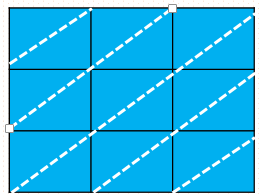Activity – Rational numbers
Objective:
To show that every rational number 𝑝/𝑞 can be represented on the number line.
Materials Required:
A drawing sheet, a compass, a scale, a pencil, an eraser, etc.
Let us represent the rational number 17/7 on the number line.
Procedure:
Draw a number line on the drawing sheet with the help of a scale.
Represent the integer 17 on it.
Let the point P represent 17.
1. Divide the segment OP into 7 equal parts.
2. Let us name the first point on the right of O as A. OA represents one-seventh of 17 or 17/7 units.
Thus, A represents the rational number 7. on the number line.
II. Now let us represent the rational number (−9)/4 on the number line.
Draw a number line. Represent - 9. (on the left of 0) on the number line. Let the point Q represent the integer -9. Now divide the segment OQ into four equal parts.
2. Let us name the first point on the left of O as B.
OB represents one-fourth of OQ, i.e., 1/4of-9 or (−9)/4units.
Thus, the point B represents the rational number (−9)/4 on the number line.
Similarly, other rational number can be represented on the number line.
Thus, every rational number can be represented on the number line, as a line segment can be divided into any number of equal parts.













